"The forest was shrinking but the trees kept voting for the Axe, for the Axe was clever and convinced the trees that because its handle was made of wood, it was one of them."
Sfeir-Semler Gallery is enormously proud to announce the reopening of its Beirut space with Marwan Rechmaoui’s solo exhibition. Despite the severe economic and political crisis we are going through in Lebanon since October 2019, despite the August 4th, 2020 blast that destroyed hundreds of lives, and wrecked our space, despite the sanitary crisis that has brought the whole world to a halt, despite it all, we resist, in pursuit of our mission to promote the city’s brilliant cultural scene and to offer the world a window to look through.
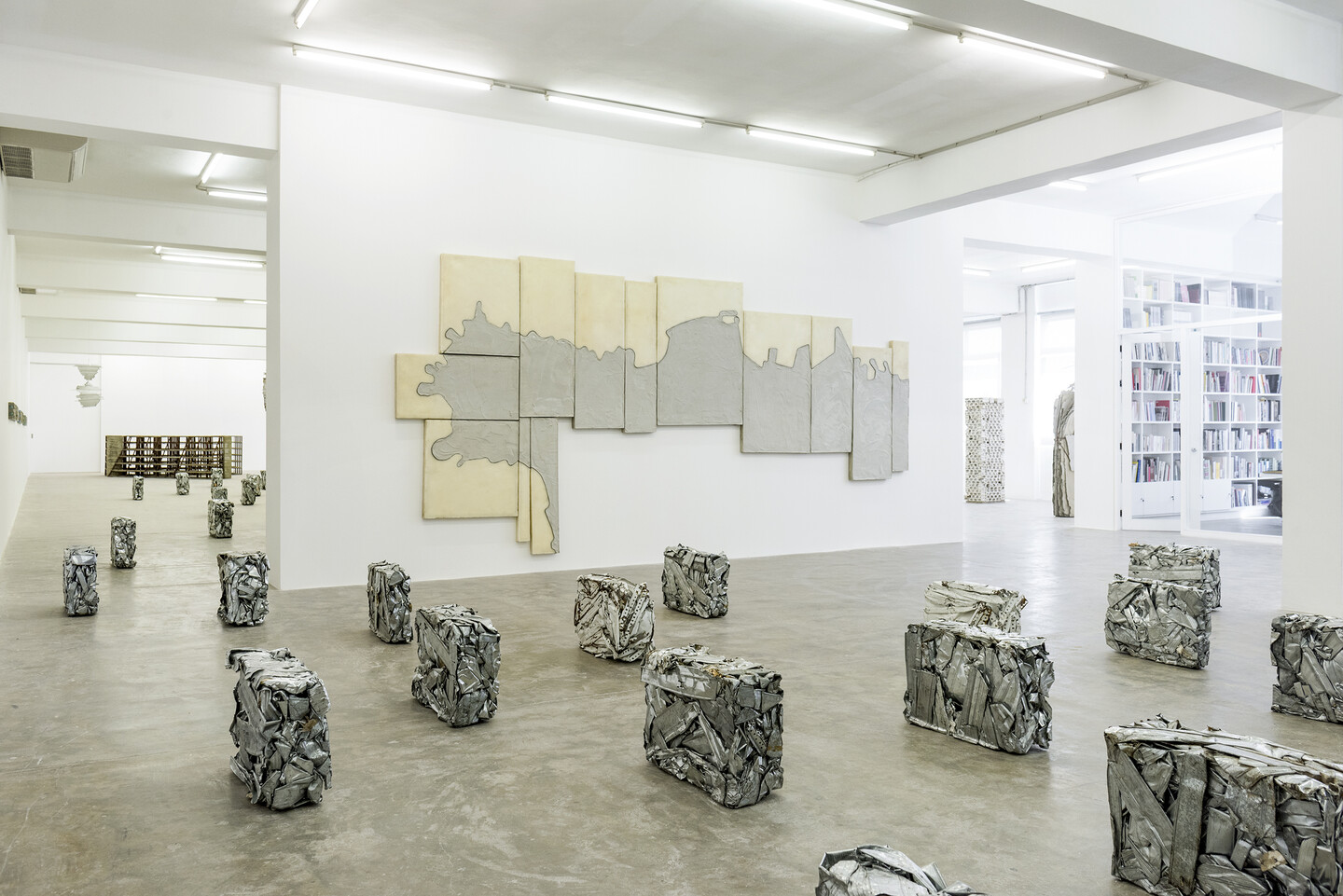
Marwan Rechmaoui’s Beirut by the Sea maps the Beirut coastline, looking at the city’s shores on the Mediterranean Sea. Responding to his extensive research on the city of Beirut, which has informed some of his iconic works such as Beirut Caoutchouc, 2004; the artists looks at the boundaries of the city, the exact point where the land ends and where the sea begins.
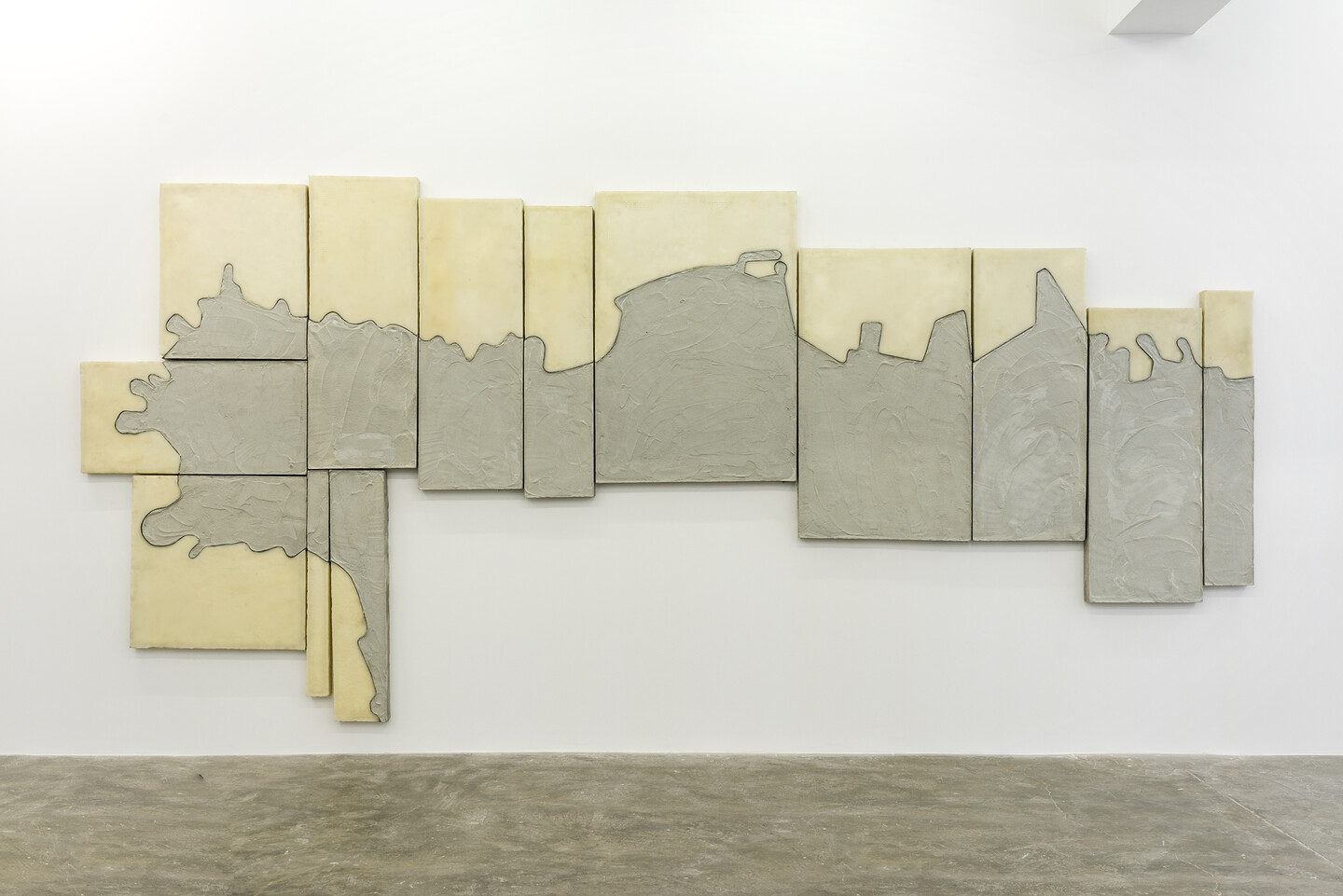
concrete, beeswax, brass, on wood, over all dimensions: 267.9 × 569.6 cm, Ed. 3 + 2AP
Following the city’s districts that he mapped multiples times, the work is composed of 13 pieces, each representing one of the 13 coastal boroughs. Ever reflecting on the harsh urban tissue of Beirut, Rechmaoui represents it with solid concrete, that stands against the natural fluidity of the beeswax sea. In between these two contrasting elements, the shoreline is traced in brass, bent to follow the sinuous coast and solidify the natural border. The map created might be different from old maps of the Beirut coastline, and reflects on the expanding city that has slowly crept onto the waters. It also presents a city that has been robbed of its public spaces, as the vast majority of the natural waterfront has been either replaced with private upscale resorts, or polluted by landfills and sewers. Beirut by the Sea embeds many historical, geographic, environmental, and socio-urban narratives that are central to Rechmaoui’s work.
Comprising 30 sculptural objects, Pillars reflects on the themes of destruction and reconstruction, combining a structural element of urban architecture, the concrete pillar, with a range of home and everyday materials.


Rechmaoui started working on this series at the beginning of the Syrian war in 2014, when the media images provoked feelings similar to those he had experienced in connection with Beirut 20 years earlier.
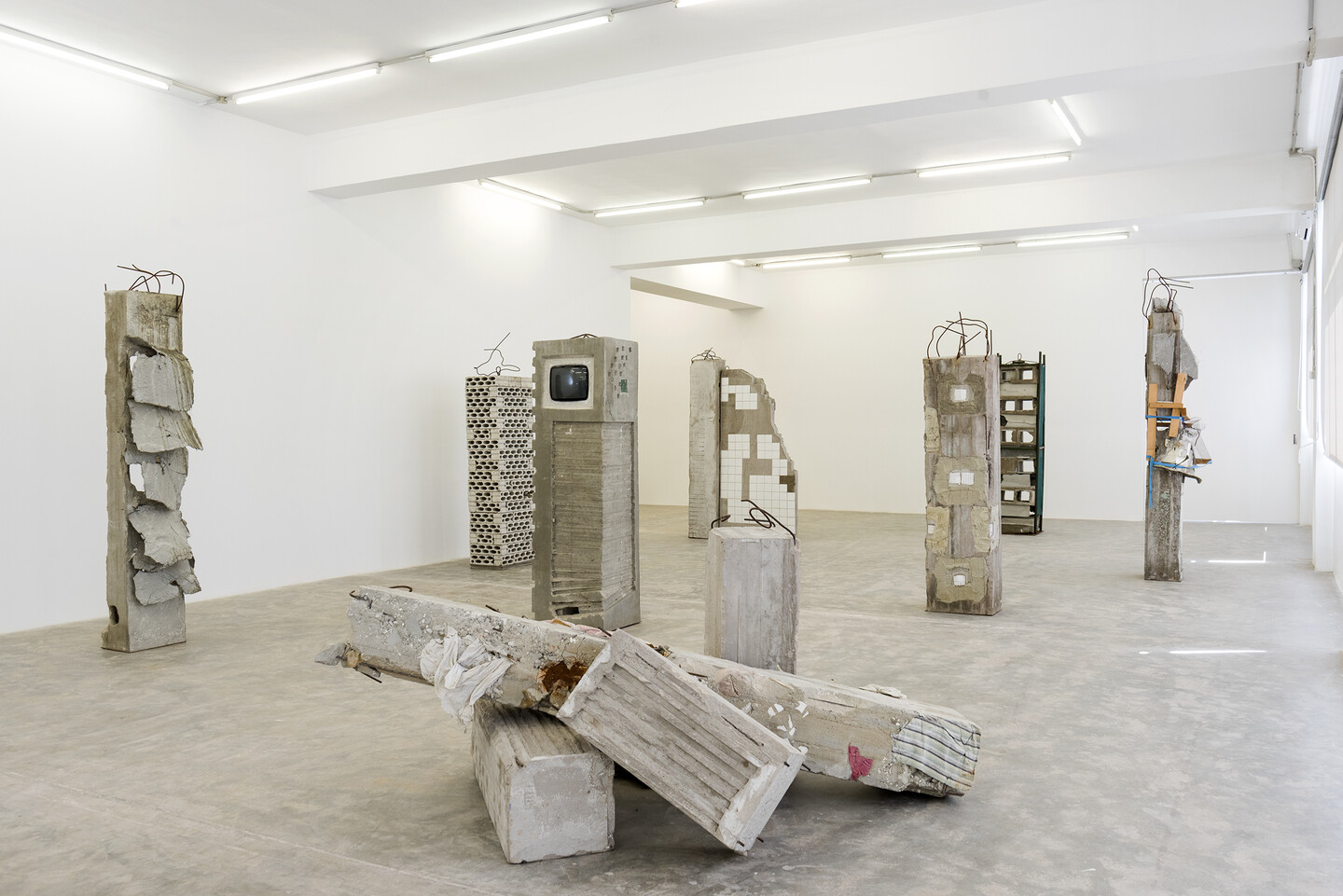

On August 4, 2020 Lebanon was rocked by an explosion at the port of Beirut located 900 meters away from Sfeir-Semler Gallery. The space was completed devastated by the blast. The artist recuperated around 600 kilograms of metal from the destroyed walls structures, and compressed them into 34 elements; a memorial to crushed lives, futures and memories.
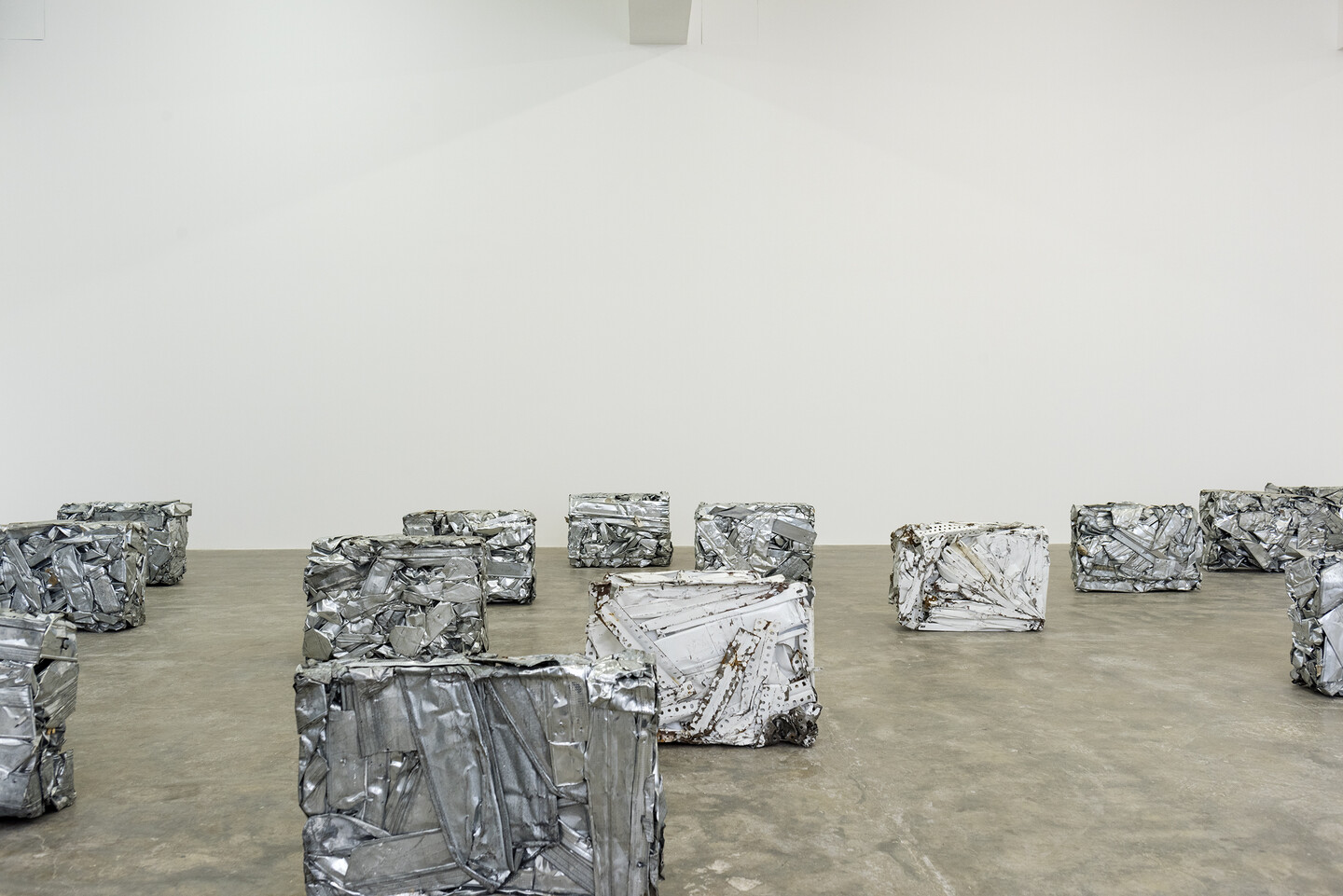
compressed metall tin, 34 pieces between 45 × 68 × 25 cm and 45 × 61 × 10cm
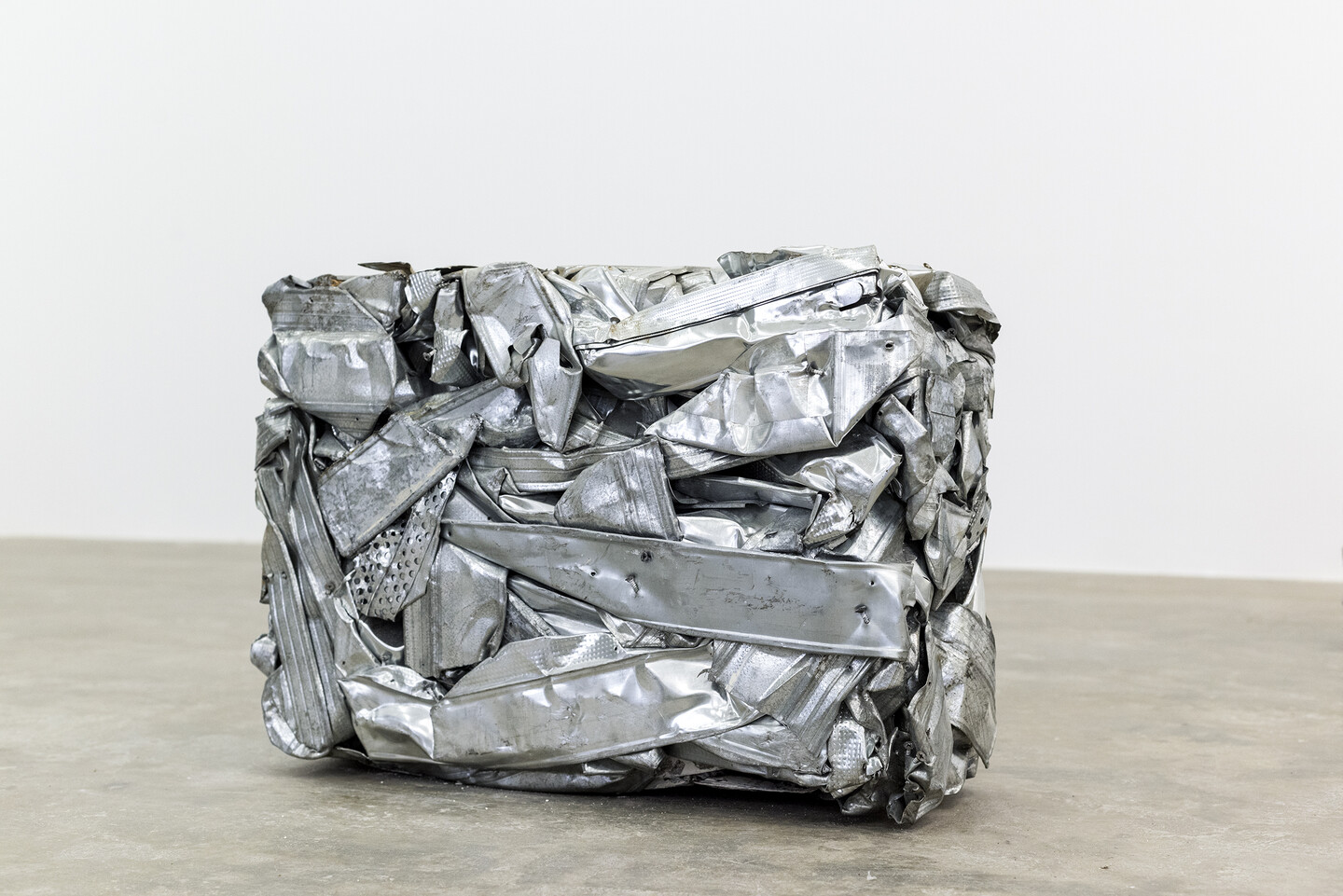

After the explosion, Marwan Rechmaoui recovered destroyed window frames from a heap of aluminum debris, mounting them on wooden panels and assembling them into hanging mobiles.
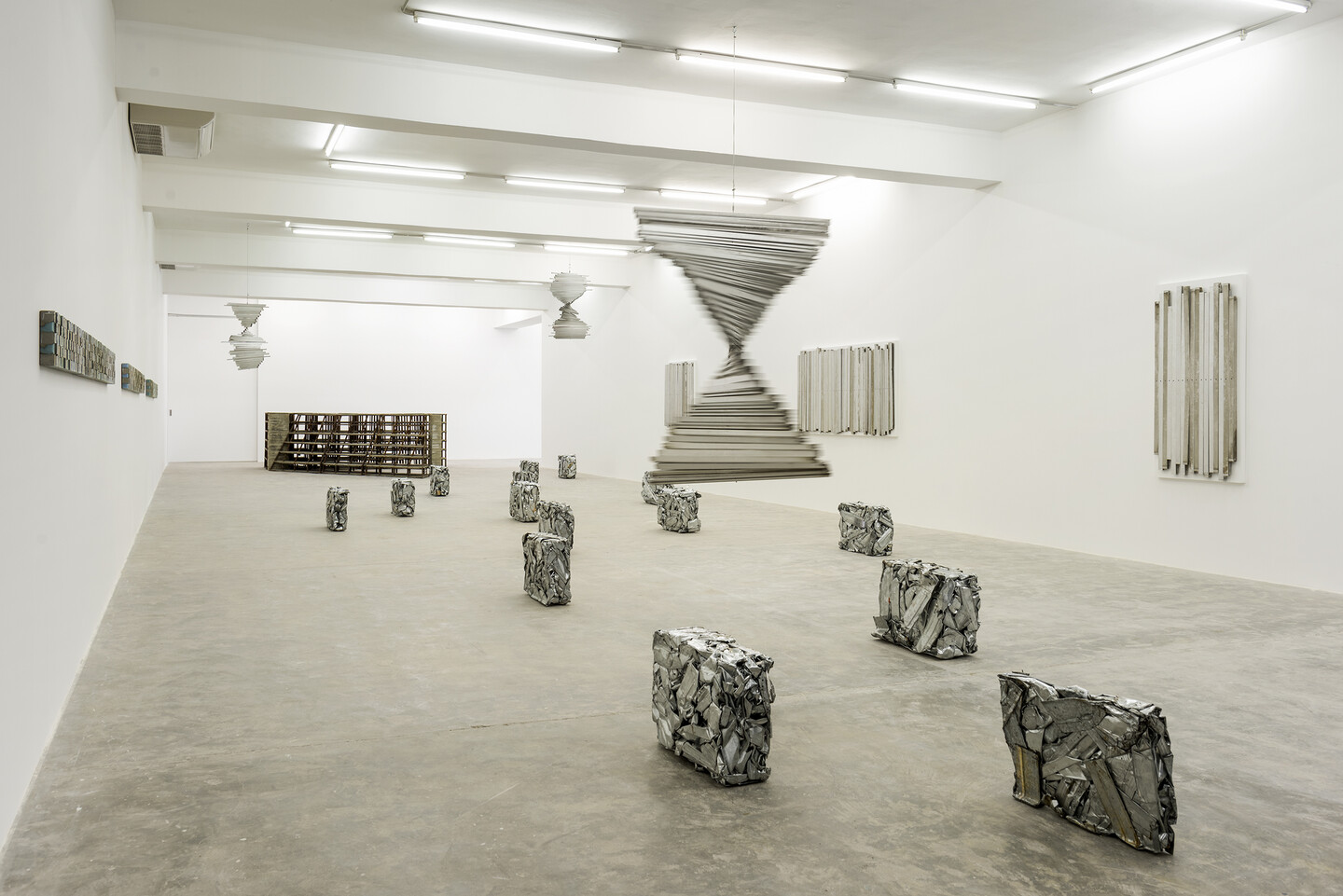
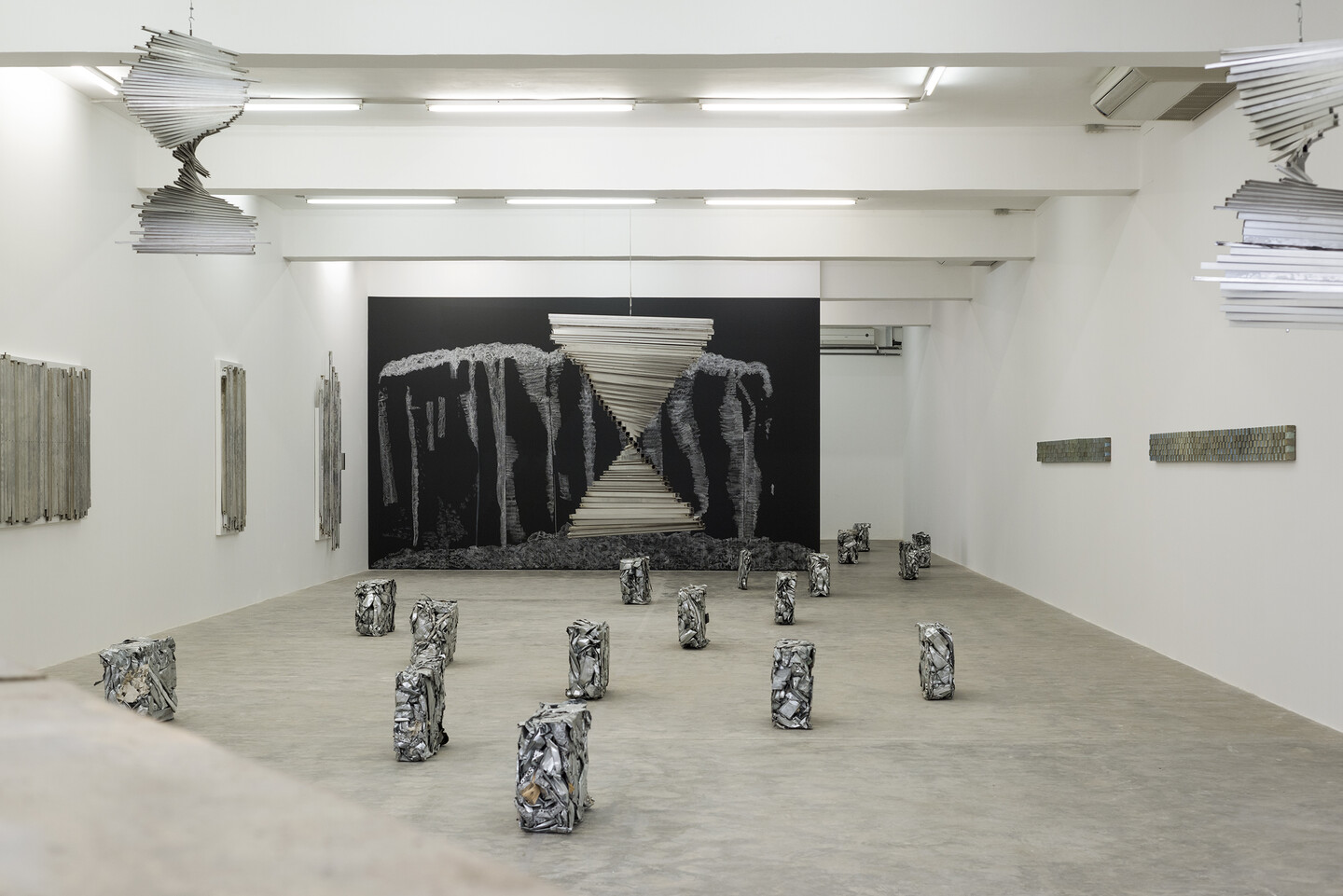
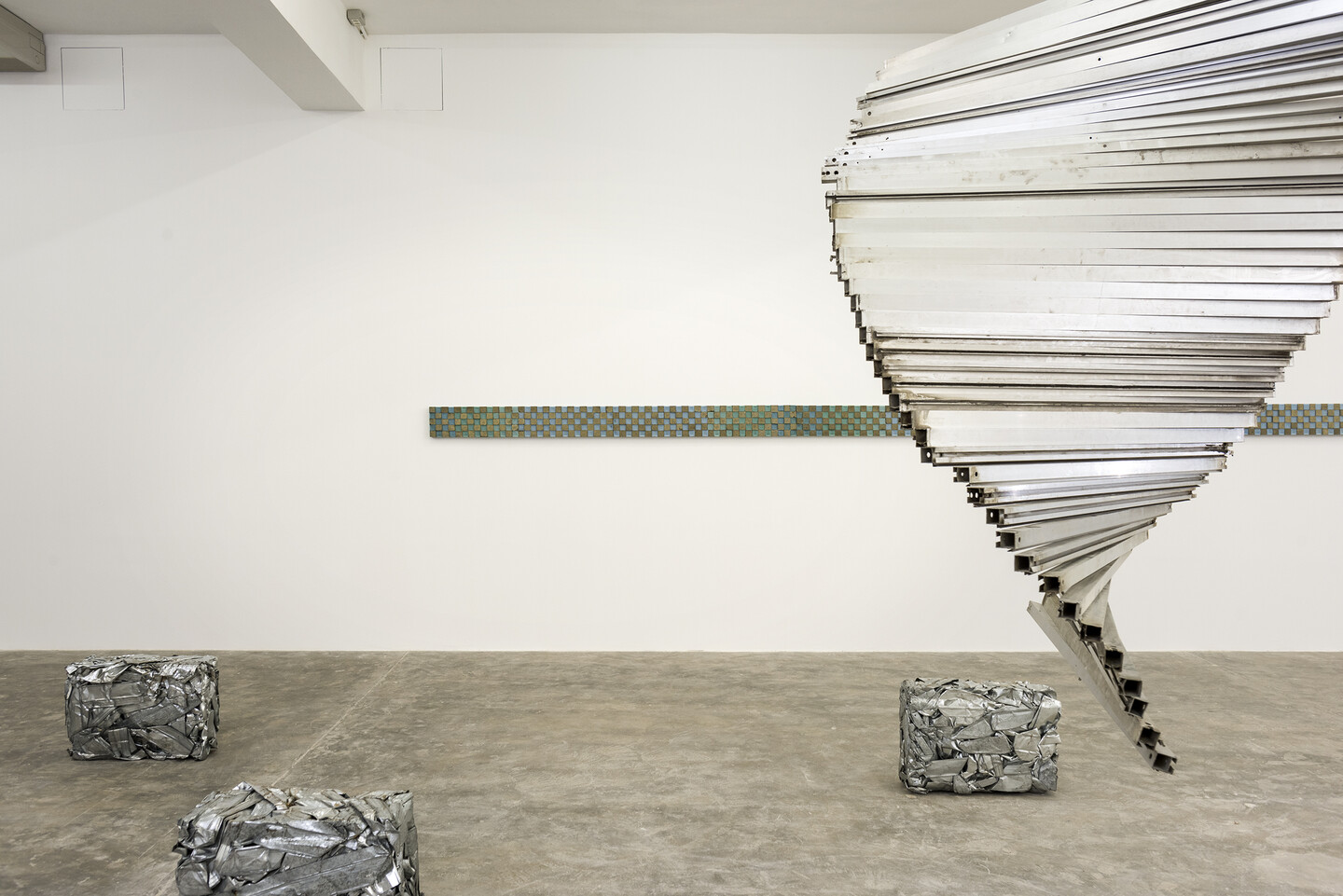
Before 1975, the shop owners in the central Beirut markets would rent their shop windows and doors to street vendors who sold counterfeit jeans, cassettes and electronics. During the two-year civil war, the market was uprooted, and the street vendors relocated, setting up their tin kiosks along the waterfront of the corniche in Raouche. Later, during the Israeli invasion in 1982, the vendors had to evacuate the area, and in response, 575 of them formed a cooperative to raise money for the construction of Raouche Market at an inland location. They planned to build this market in a new residential and commercial neighbourhood in the south of the city. The newly designed building would have had 600 units and housed all the scattered shops and stalls. However, the construction was brought to a halt in 1986 with a campaign against the privatization of the market. With one façade slanted and the other two straight, the distinctive design of this building, particularly in relation to its current surroundings, renders it conspicuous and noticeably incomplete.
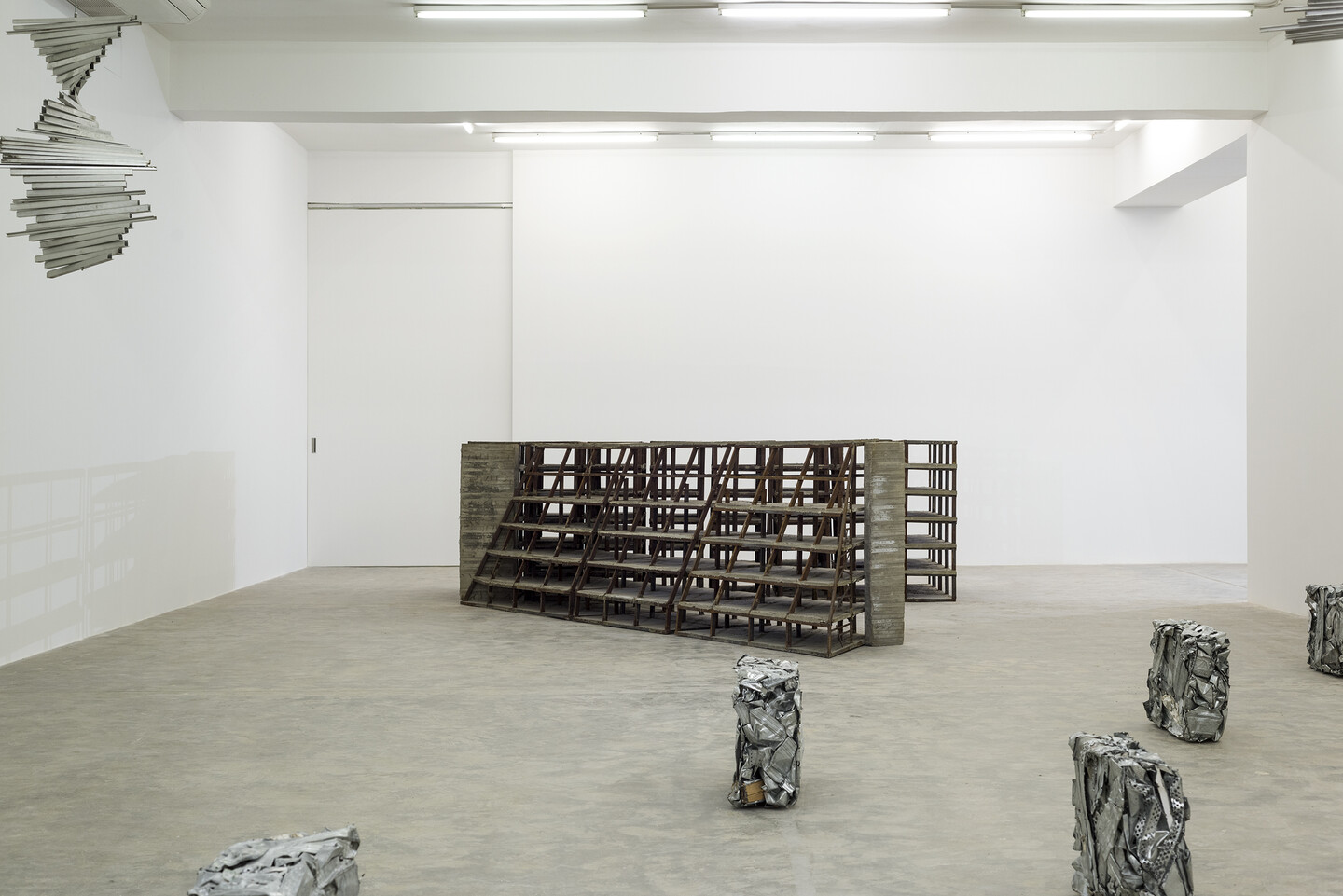
Rechmaoui has a longstanding practice of drawing. Nowadays, he keeps a stack of paper next to him and usually draws in the evenings, jotting down thoughts and images inspired by events happening around him, music, his garden or snippets of news.
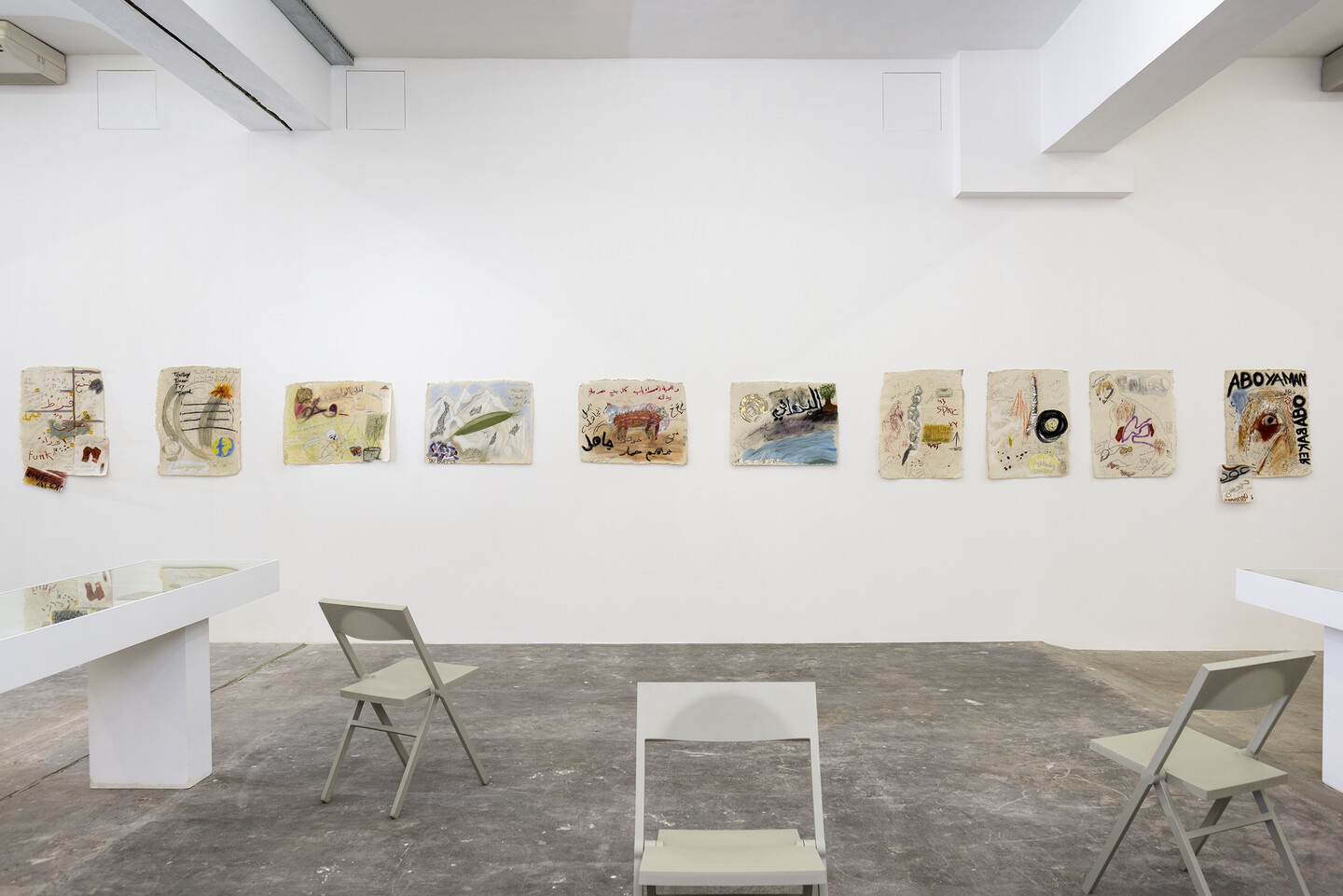
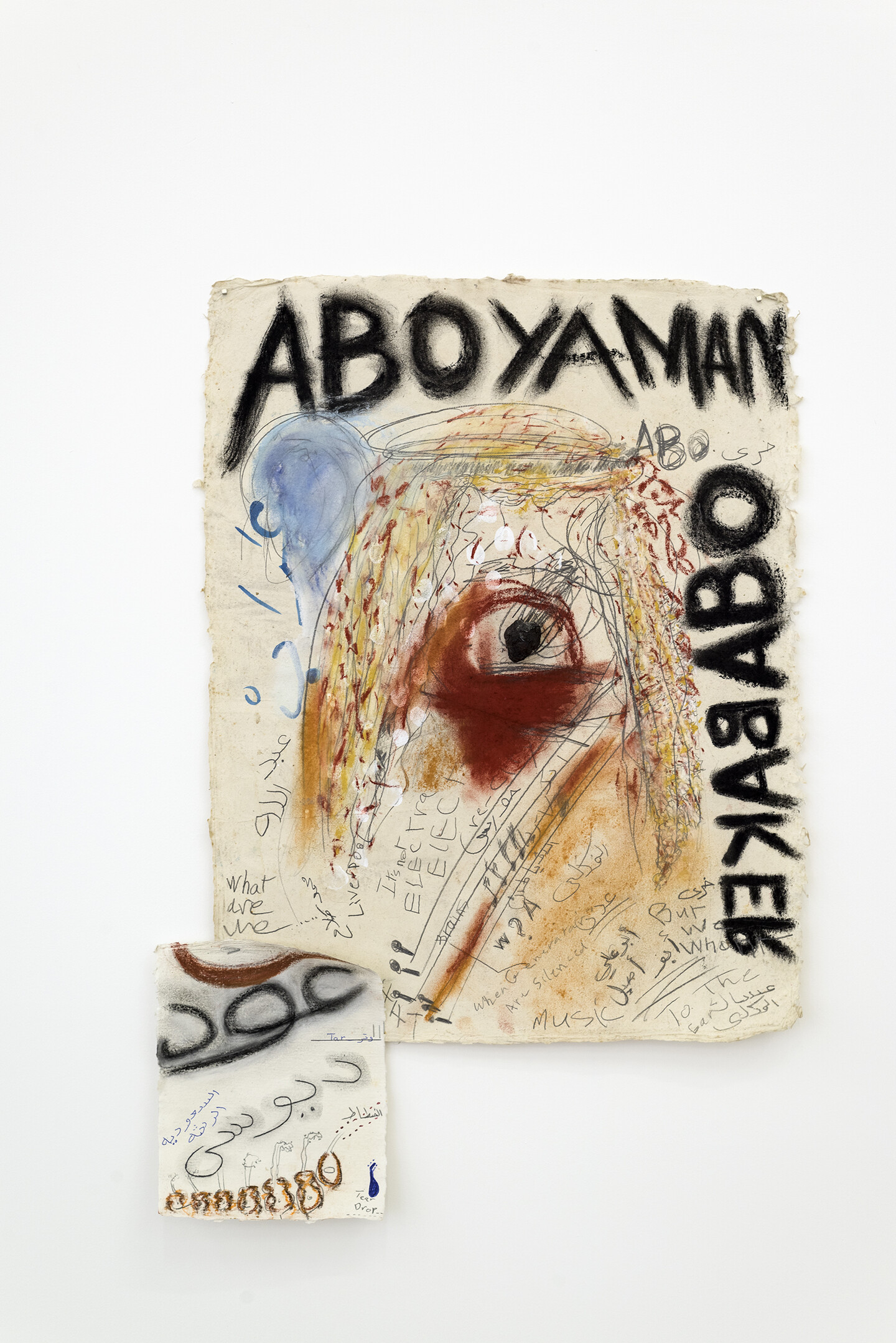
pastel and charcoal on paper, 93.5 × 64.4 cm
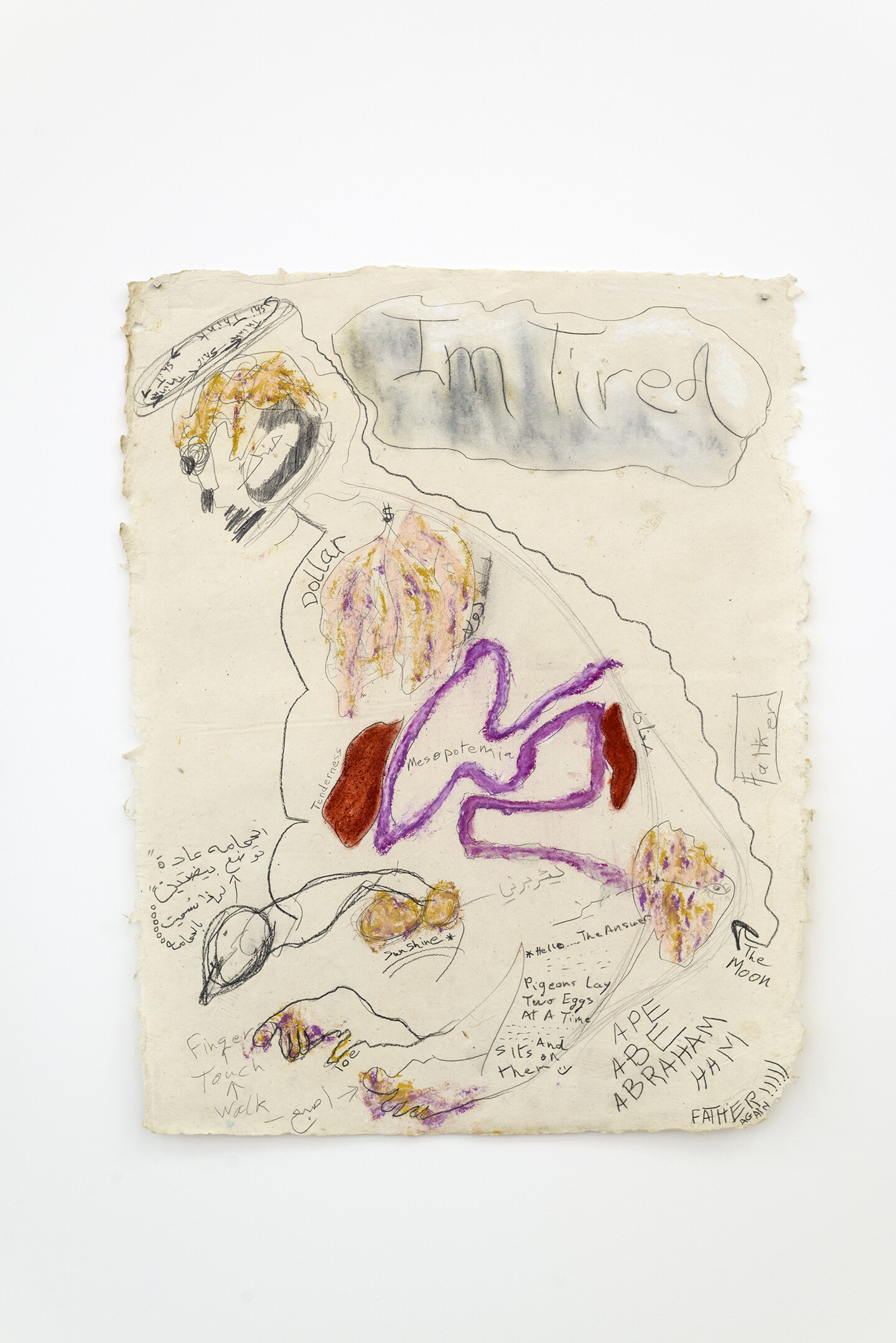
pastel on paper, 75 × 60 cm

pastel on paper, 75.5 × 56.5 cm